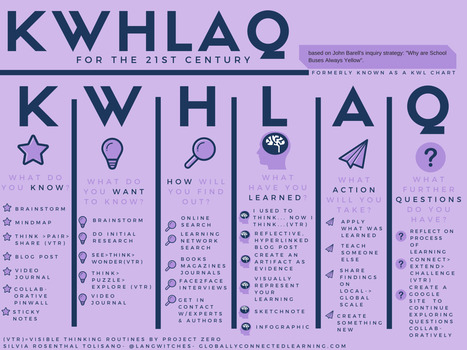In 2011, I wrote a blog post, titled Upgrade your KWL Chart to the 21st Century. It described how I learned about a new version of the traditional KWL (What do I Know, What do I Want to know and wh...
Research and publish the best content.
Get Started for FREE
Sign up with Facebook Sign up with X
I don't have a Facebook or a X account
Already have an account: Login
Tech tools that assist all students to be independent learners & teachers to become better teachers
Curated by
Beth Dichter
 Your new post is loading... Your new post is loading...
 Your new post is loading... Your new post is loading...
|
|











This article shares an updated version of KWL (What do I Know, What do I Want to know and what have I Learned). How many use this in their classrooms?
Check out this new version of the KWL chart by Silvia Rosenthal Tomlison. What we once called KWL is now the KWHLAQ.
* K stands for 'What do you KNOW?'
* W stands for 'What do you WANT to know?'
* H stands for 'HOW will you find out?'
* L stands for 'What have your LEARNED?'
* A stands for 'What ACTION will you take?'
* Q stands for 'What further QUESTIONS do you have?'
This new visual also includes suggestions under each category to help students make their "thinking and learning visible." For more information click through to the post.